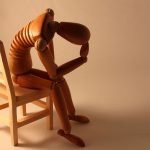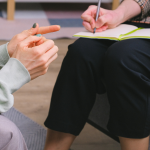A Long Story- Well, It Is a Long Story!
Joseph Kellerstein, DC, ND
Normally, I would want to share with you a cured case so that you might model a thought process that seems to have worked for the cure of a chronic or acute illness. The proper definition for a cure is a lapse of about 1 year before we proclaim the happy event.
The truth is that I want to break with tradition because today I had what was for me a compelling experience in homeopathy, which I want to share with you. Even if I am totally wrong in my prescribing, I believe that this story has some value even if it is only in confirming my neurosis.
Report of a Case
Tara is someone I have been treating for some time. She had several chronic complaints that have responded well to remedies such as Pulsatilla and Lycopodium (yes, the boring ones). Her original problems were anxiety, digestive, and skin complaints. I have not heard from her in several months, when she was all in all quite well.
A month ago, I got a call concerning a new problem, a foot issue that is not serious but annoying. There is metatarsalgia on standing, but her walking seems fine. The pain is a cross between soreness and pressure. None of the symptoms are useful, and I search the repertory a bit in response. She said her foot hurts when standing at all, which elicited the following: EXTREMITY PAIN; LOWER LIMBS; Foot; standing, while (9) : ang.Dock, chin., eup-per., med.Dock, 2puls., rhus-v., 3RutaDock, squil.Phat, tarax. I could get nothing more at all, so I gave her a dose of Ruta graveolens (200C).
I spoke with the patient once again this morning: “There really is no change in the situation.” Her foot feels the same and is not better, she said.
I asked: “Please, could you again describe exactly how you feel?”
Tara responded: “Well, the toe feels extended.”
I probed: “How do you mean? Is it feeling as if it is bent too far backward?”
She clarified: “No, it is as if it is longer than it should be.”
I exclaimed: “Longer!”
She affirmed: “Yes.”
I inquired: “And is that ‘longer’ at all uncomfortable?”
Tara replied: “Oh yes, there is a pulling pain in the toe.”
I queried: “Were these sensations there when I last spoke to you?”
She said: “I don’t recall.”
I asked: “Anything else, anywhere else?” (a lovely question I learned from reading Homeopathic Diagnosis: Hahnemann Through Bonninghausen by George Dimitriadis [Sidney, Australia: Hahnemann Institute; 2004]).
She answered: “Well, it has been stressful.”
I reflected: “In what way?”
Tara explained: “I have been thinking of making a move for some time, but I finally decided to change jobs for some new experiences in my professional development. It has provoked the same old anxieties I get regarding failure and the fear of being all alone. Fears of what will happen as a result of my acting on this decision.”
I inquired: “Have these feelings been frequent?”
She answered: “Yes.”
I interrogated: “How strong?”
Tara answered: “They really have been dominating me day and night and interfering with sleep.”
A systems review revealed nothing of significance. I found it fascinating that her characterization of a local symptom contained a mental delusion (elongation of the part) and yielded a precise sensation (drawing pain) (please note that any discomfort is in repertorial language a pain and so is open to all those rubrics).
It takes so little to make me happy. Let us peek at the repertory chart!
What About Materia Medica Verification?
Materia medica corroborate the following: (1) Delusions: body, toes, longer (Mirrilli). (2) Drawing in all the toes (Metcalf). (3) Fear from anticipation (Sheppard).
Hahnemann tells us in the Organon that in a case where there are few symptoms one should give the most indicated remedy and then wait for the case to develop further. In other words, be wrong but just do it quickly so you can move on!
So am I right or wrong? I have no clue. I only believe that based on the available clarity I am compelled to give this remedy.
What is lovely is that if I am wrong I can refer to my rationale (the rubrics) and check on the changes. I have an available strategy for continuance.
The basis of science is falsifiability of the hypothesis. Because I know exactly why I gave this remedy, I can make room for a new hypothesis emerging from continued observation of my patient.
If I chose my path by kingdom, miasmatic theory, or some other speculative device (a nonhomeopathic basis), I am lost and must seek a new speculation to lean on. Hahnemann has us lean on nothing but pure observation—no ego or pseudoreligious stuff—just the facts without prior paradigm. I can deal with that.

 Joseph Kellerstein, DC, ND graduated as a chiropractor in 1980 and as an ND in 1984. He graduated with a specialty in homeopathy from the Canadian Academy for Homeopathy, and subsequently lectured there for two years. He also lectured in homeopathy for several years at CCNM; for eight years at the Toronto School of Homeopathic Medicine; and for two years at the British Institute for Homeopathy. Dr. Kellerstein’s mission is the exploration of natural medicine in a holistic context, especially homeopathy and facilitating the experience of healing in clients.
Joseph Kellerstein, DC, ND graduated as a chiropractor in 1980 and as an ND in 1984. He graduated with a specialty in homeopathy from the Canadian Academy for Homeopathy, and subsequently lectured there for two years. He also lectured in homeopathy for several years at CCNM; for eight years at the Toronto School of Homeopathic Medicine; and for two years at the British Institute for Homeopathy. Dr. Kellerstein’s mission is the exploration of natural medicine in a holistic context, especially homeopathy and facilitating the experience of healing in clients.









